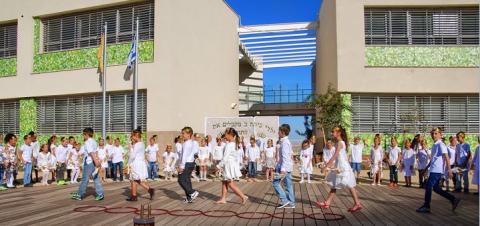New Trends in Religious Education
His death could easily spell a turn for the worse for the moderating tendencies in the ultra-Orthodox world – or it could have quite the opposite effect because there’s no rabbi of the same stature who can stop younger Haredim from using smartphones and the internet or studying at university.
Even while he was alive, the opening of the Haredi world was well under way, as data by the Shoresh Institution for Socioeconomic Research last week reveals. It confirms other studies by the Taub Center for Social Policy Studies. Confounding all the predictions, they show that the growth in the number of ultra-Orthodox students has slowed down considerably at the same time the state-religious schools are showing enormous growth. The growth in the number of students in Haredi schools has slowed from 4.2% between 2000 and 2009 to 3.3%, while state religious numbers went from being stagnant to expanding at 3.1% a year.
The rate of growth in Israel-Arab schools has also dropped from 3% annually to just 0.2%, which is largely attributable to their growing middle class aspirations and the desire to have fewer children that they can raise at a higher standard of living. The Arab fertility rate has shrunk from 4.5 per woman to 3.1 in the space of 20 years and is approaching the 2.6 for secular Israeli women and well below the average of five for Israel’s national religious population. However, the fertility rate for Haredi women beats them all handily, with an average 6.5-7 per woman. So how come Haredi classrooms aren’t bulging with children?
Nachum Balas and Haim Bleikh investigated why forecasts that Haredi and Arab children would soon make up more than half Israel’s first grade population failed to materialize. While their combined share had declined to 43% last year from 46% in 2007, the state-religious share has jumped. Not only that, but the Haredi share of Israel’s student population shrinks as the grades go higher. In first grade, they make up 19% of the school population nationwide, but the ultra-Orthodox share falls to 16% by junior high school and to 15% by high school.
Balas and Bleikh found there was relatively little movement of students between the various educational streams – state, state-religious and Haredi (independent), but there is movement running from more religious to less religious, i.e, Haredi students moving to state-religious schools and state-religious students going to state schools). Whatever movement there is tends to come at the expense of Haredi schools.
Researchers can’t fully account for the decline in Haredi numbers, but Dan Ben-David, who heads the Shoresh Institution, surmises it has to do with the economic distress of the ultra-Orthodox Society of Learners, which discourages children from getting a secular education and prefers adult men to study rather than work. It’s no longer economically viable, so many families are quietly sending their children to school with secular studies that can prepare them for the job market.
It’s hard to believe there are many Haredi families willing to risk social ostracism by sending their children to non-Haredi schools. Balas thinks what we’re seeing – more and more Haredi families abandoning ultra-Orthodoxy altogether and enrolling their children in non-Haredi schools – is the natural outcome.
That would fit in well with Shteinmen’s belief that the ultra-Orthodox world was too big to keep all its believers behind ghetto walls. He acknowledge the weakening grip of the ultra-Orthodox lifestyle for many and, instead of denouncing it, he preferred to try to understand it and try to help as many people as possible to maintain an ultra-Orthodox life.
Meirav Arlosoroff

